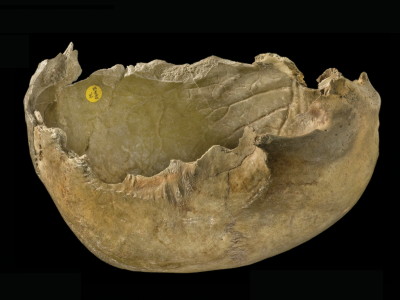Evidence that Roman beast fighters were bitten by lions discovered in Britain

In ancient Rome,
Unique osteological evidence for human-animal gladiatorial combat in Roman Britain | PLOS One
https://journals.plos.org/plosone/article?id=10.1371/journal.pone.0319847

Study reveals skeletal evidence of Roman gladiator bitten by lion in combat | EurekAlert!
https://www.eurekalert.org/news-releases/1080670
Scientists Discover First Probable Evidence of a Roman Fighter Mauled by a Lion : ScienceAlert
https://www.sciencealert.com/scientists-discover-first-probable-evidence-of-a-roman-fighter-mauled-by-a-lion
Lion mauled gladiator to death 1,800 years ago in Roman Britain, controversial study suggests | Live Science
https://www.livescience.com/archaeology/romans/lion-mauled-gladiator-to-death-1-800-years-ago-in-roman-britain-controversial-study-suggests
Ancient Roman gladiators have been recorded in various historical documents and works of art. Thanks to these descriptions, we know that gladiators fought in huge amphitheaters as spectacles for the audience, that gladiators who continued to win and became popular gained fame and a luxurious life, and that they sometimes fought various wild animals. However, there are not many remains of actual gladiators, and archaeologists do not have many direct clues to know about the battles of that time.
However, excavations carried out in 2004 and 2005 at a Roman cemetery in York, northern England dating back approximately 1,800 years, uncovered the remains of several dozen well-built young men. Subsequent investigations revealed that the remains of the men came from various Roman provinces, bore signs of decapitation, and bore many fractures and healed injuries believed to have been inflicted on human beings.
There have been theories about the origins of these men, including massacred people, soldiers, or slaves, but what caught the experts' attention was that the healed skull damage was very similar to that of remains found in the gladiator cemetery in Ephesus , Turkey. In addition, it is highly likely that decapitation was a customary practice to save dying gladiators from pain. Based on these evidences, the most likely theory is that the remains found in York are those of gladiators.
The new study analyzed one of the remains excavated in York, identified as 6DT19. The man was around 26 to 35 years old when he died around 200 to 300 AD, and had spinal problems due to malnutrition and overload as a child, but may have recovered from them later. What was unique about the remains was that the man's bones had 'scars like holes and grooves.'
The photo below shows a scar on the ilium , which makes up the male pelvis.

There were numerous puncture wounds near the man's pelvic bone that showed no signs of healing, meaning they may have been inflicted either before or after his death, and may have been fatal.

To determine what caused these wounds, a research team led by Professor Tim Thompson, an archaeologist at Maynooth University in the UK, performed 3D scanning of the bones and compared them with bite marks from animals in the zoo. As a result, it was found that the man's wounds were likely inflicted by a large cat such as a lion.
Co-author Malin Holst , lecturer in osteoarchaeology at the University of York's Department of Archaeology, said: 'The bite marks were likely made by a lion, supporting the idea that the remains buried in this cemetery were gladiators, rather than soldiers or slaves as originally thought. These results provide the first osteological confirmation of the association of large carnivores with humans in battle and entertainment in the ancient Roman world.'
When most people hear the words 'gladiator fights,' they might imagine them taking place in the Colosseum in Rome, but this research suggests that there was an amphitheatre in York, far from Rome, where gladiator fights were held as spectacles and even exotic animals such as lions were brought in.
'We're trying to get rid of the old mistake that gladiators fought animals,' said Alfonso Manas of the University of California, Berkeley, who was not involved in the study. 'People who specialize in fighting wild animals are called bestiaries, and are distinct from gladiators. The men studied couldn't have been gladiators.'
Related Posts:







